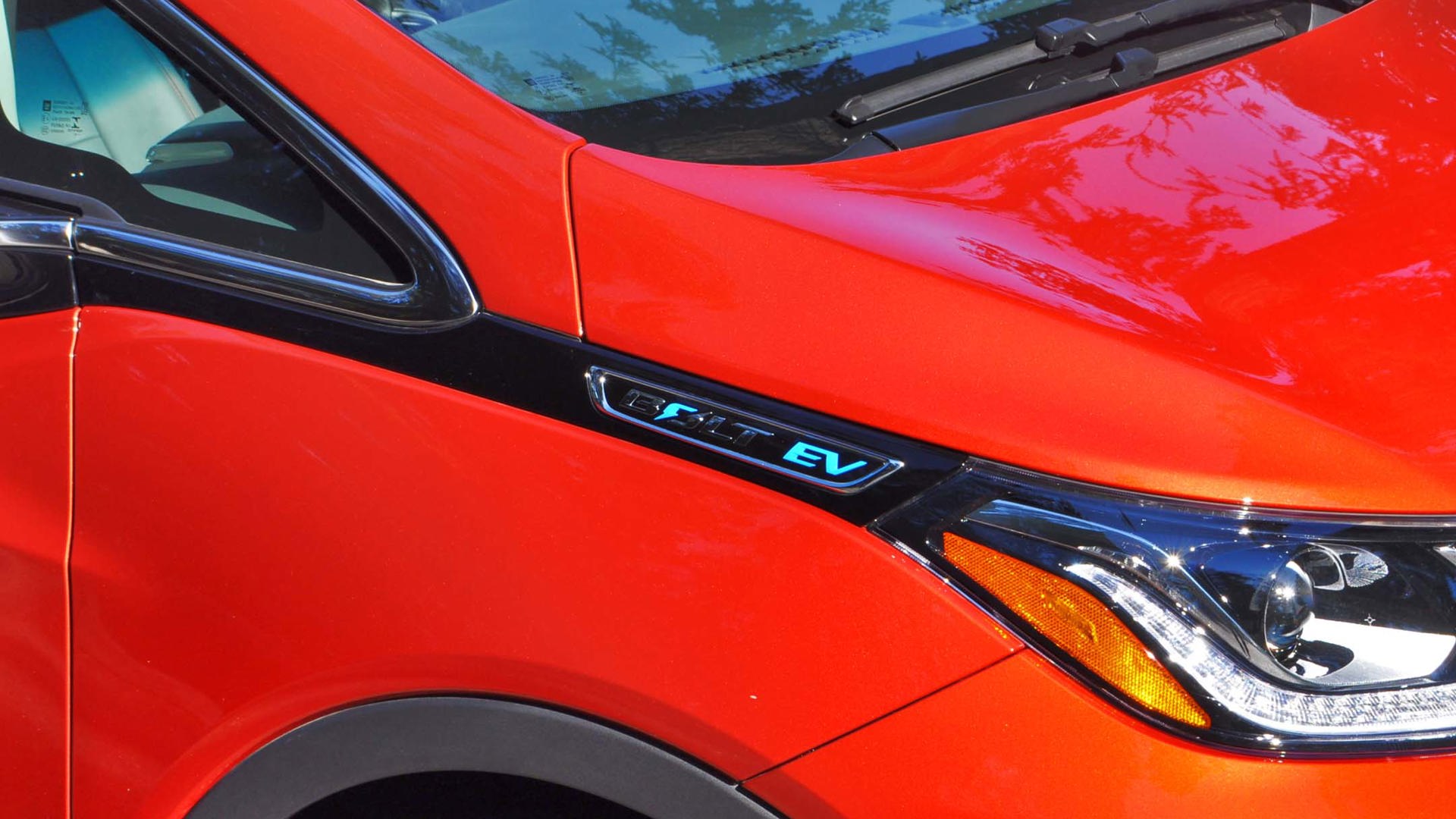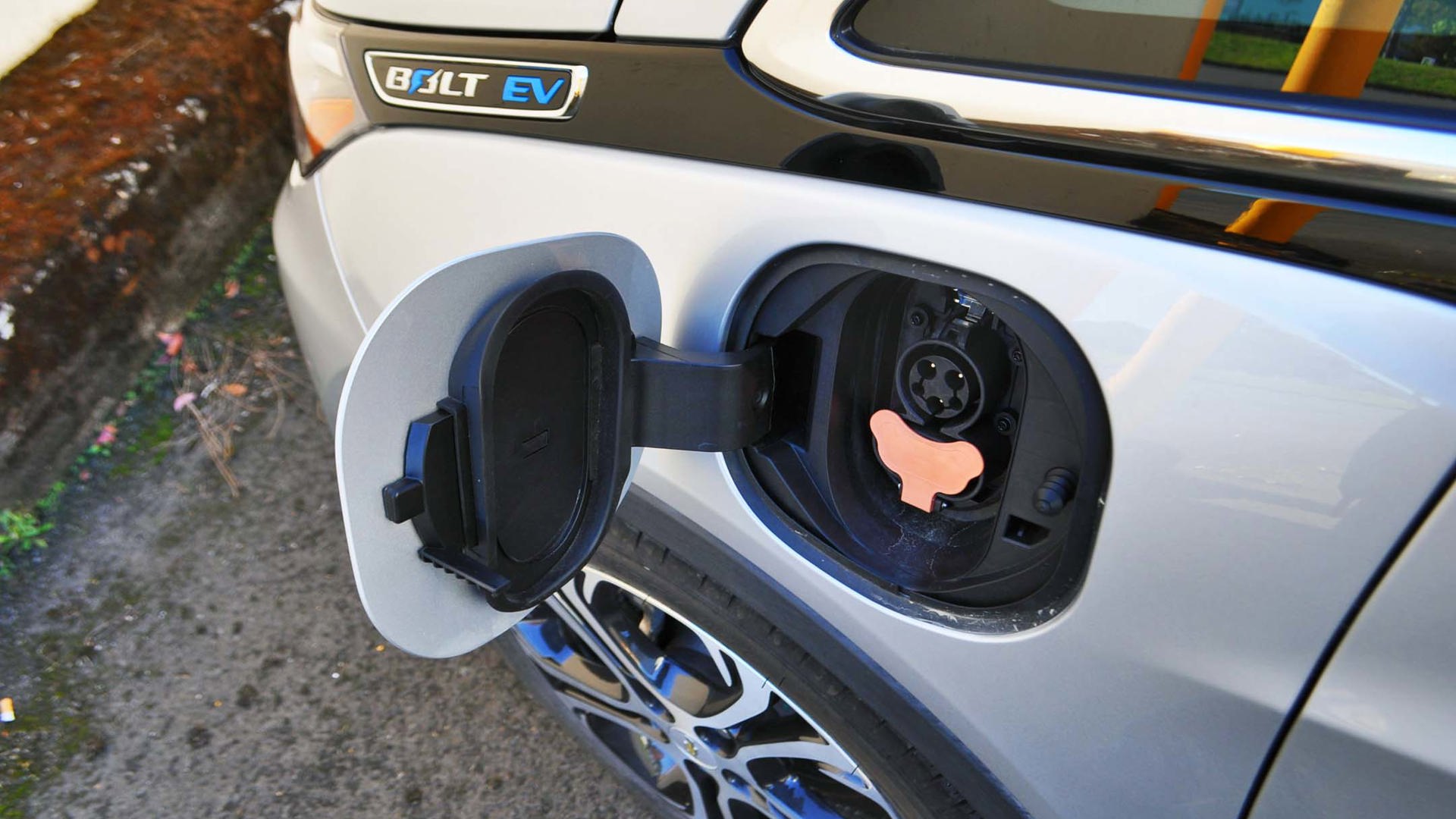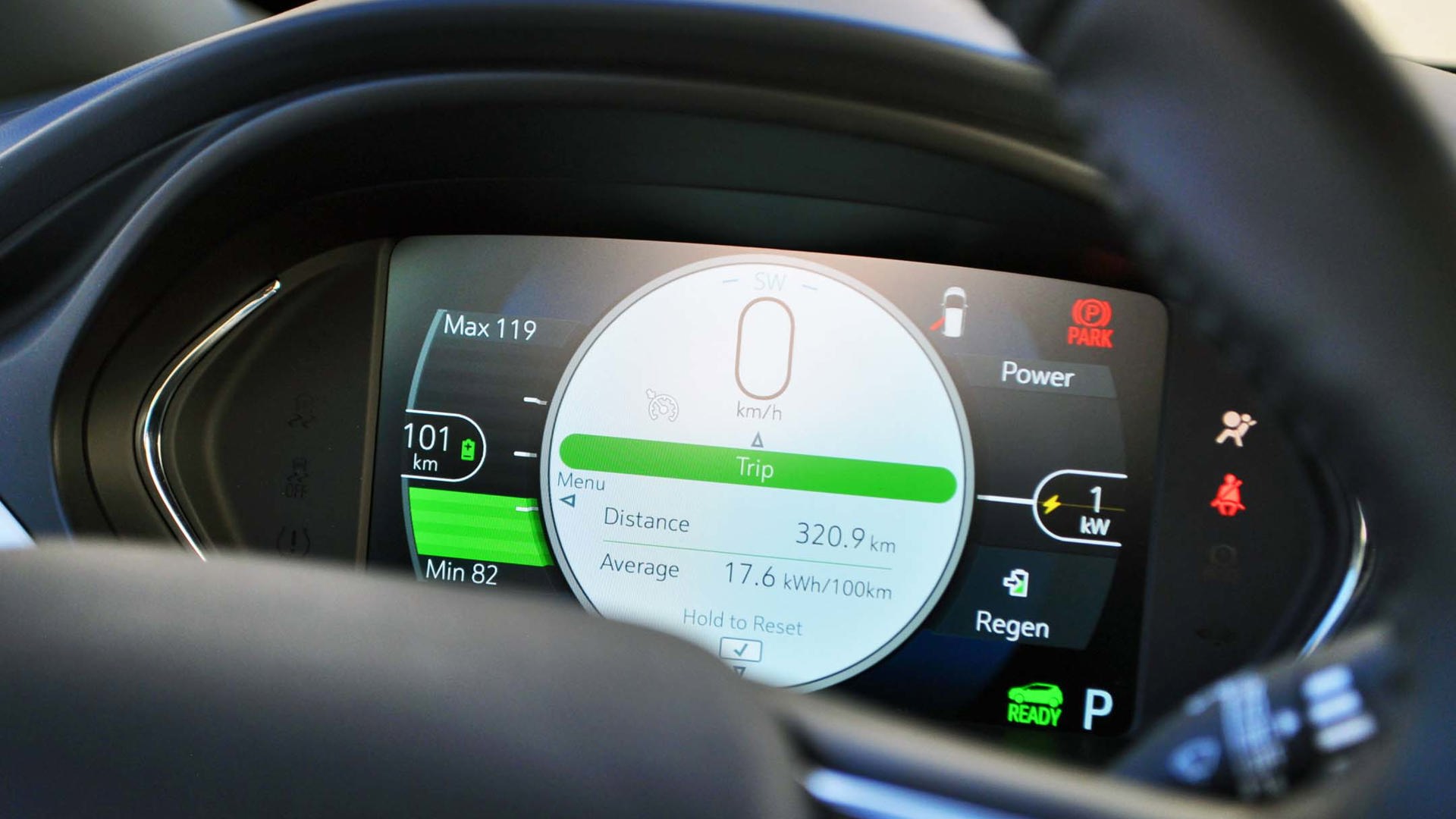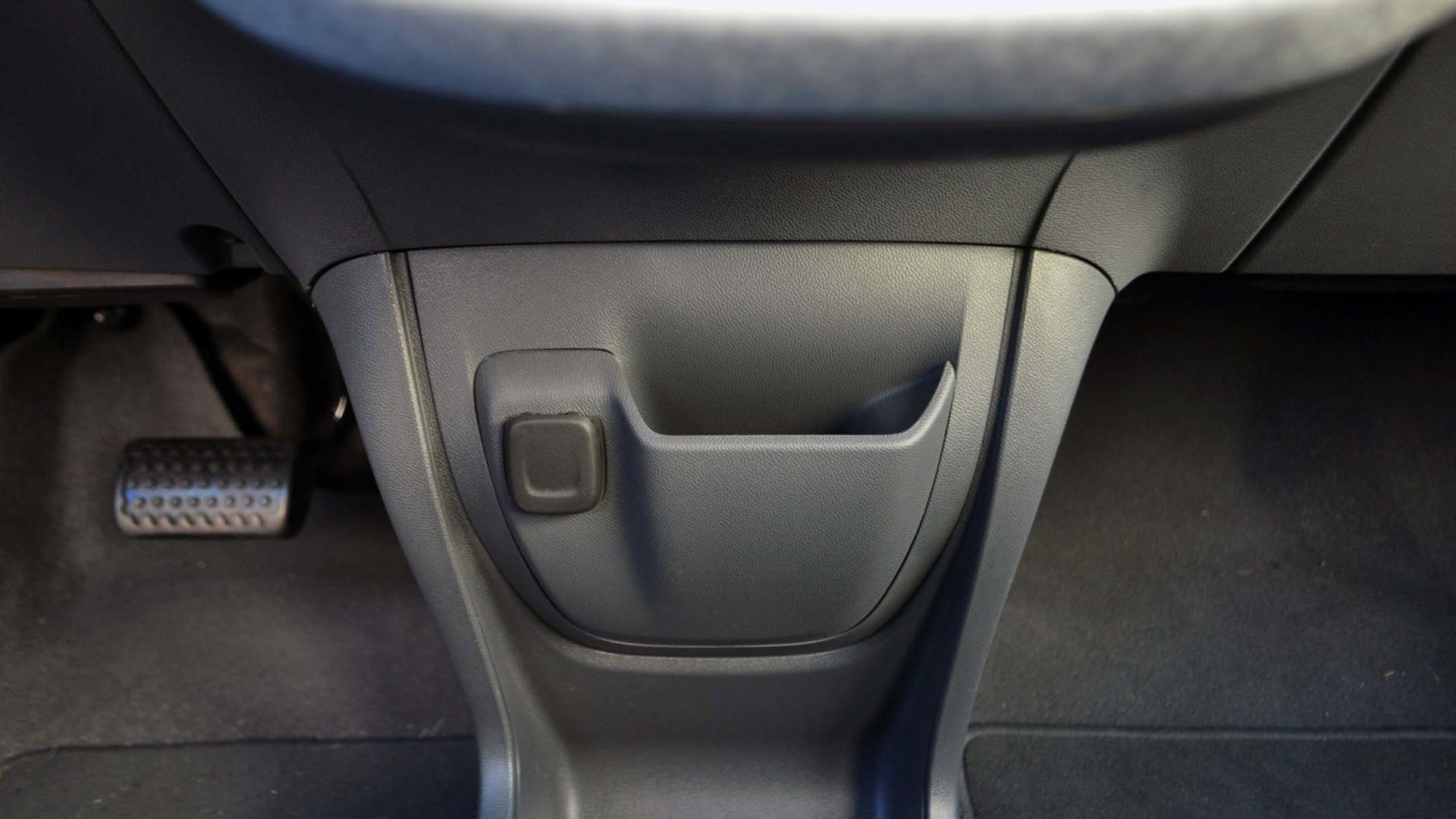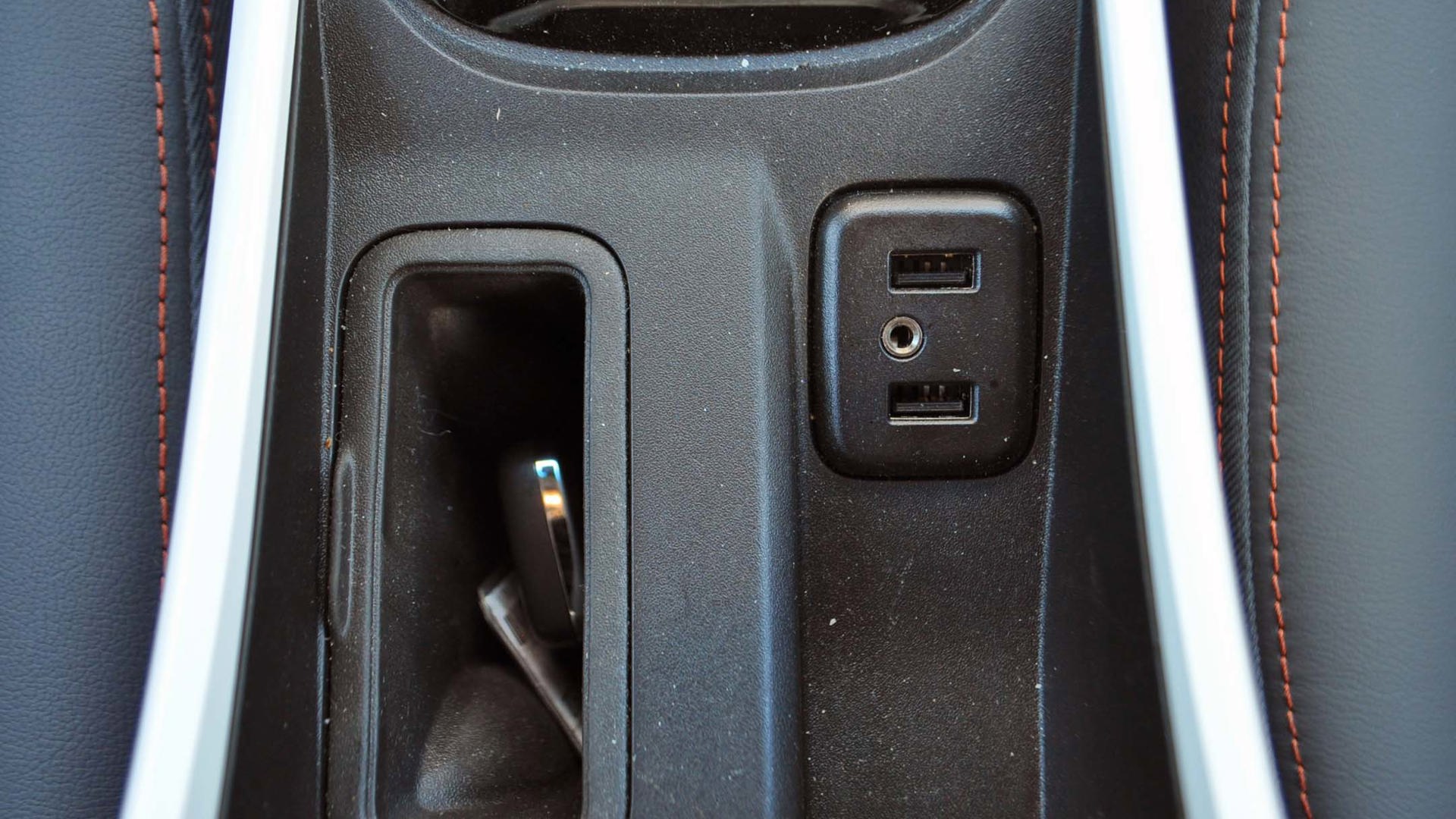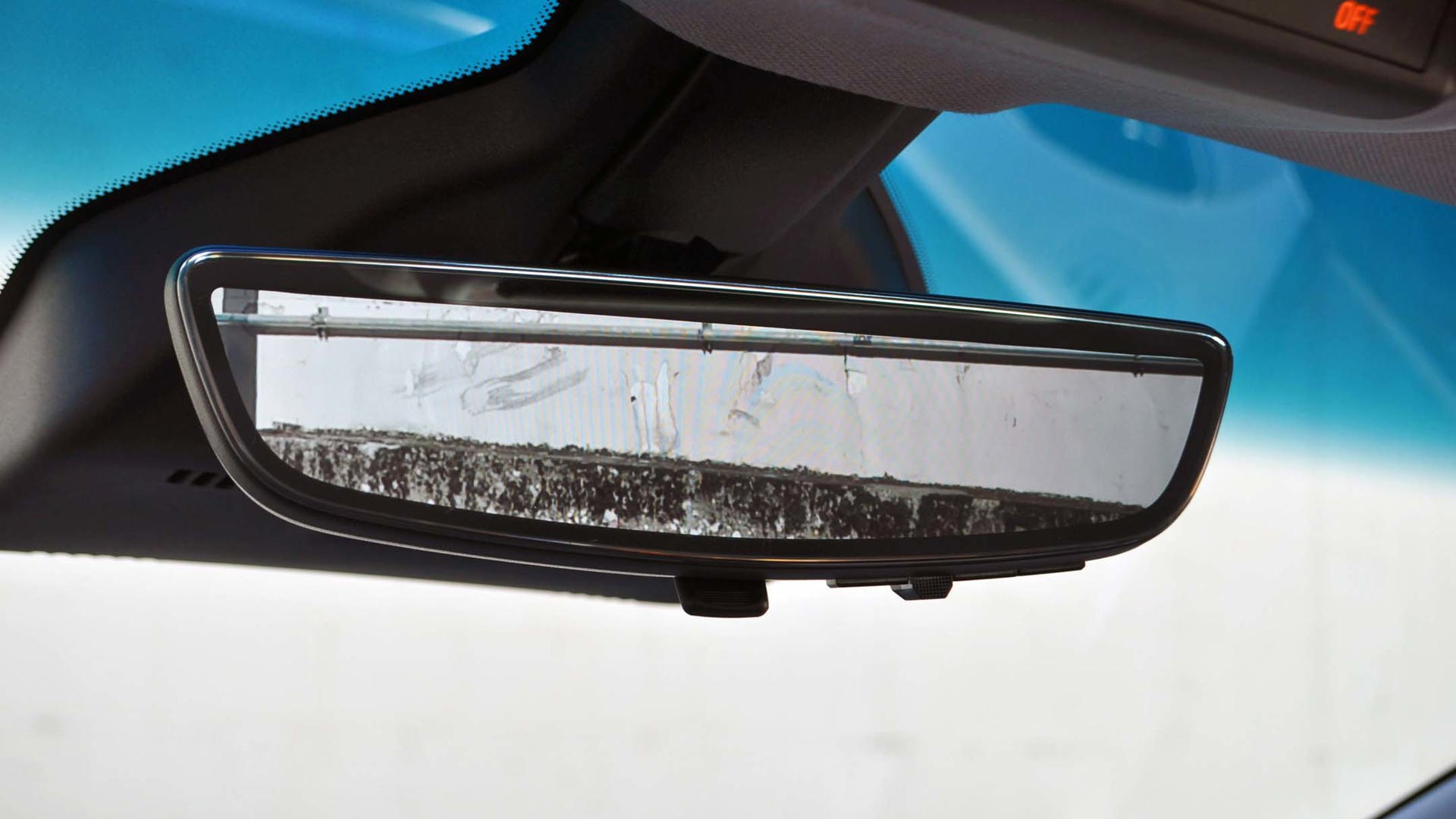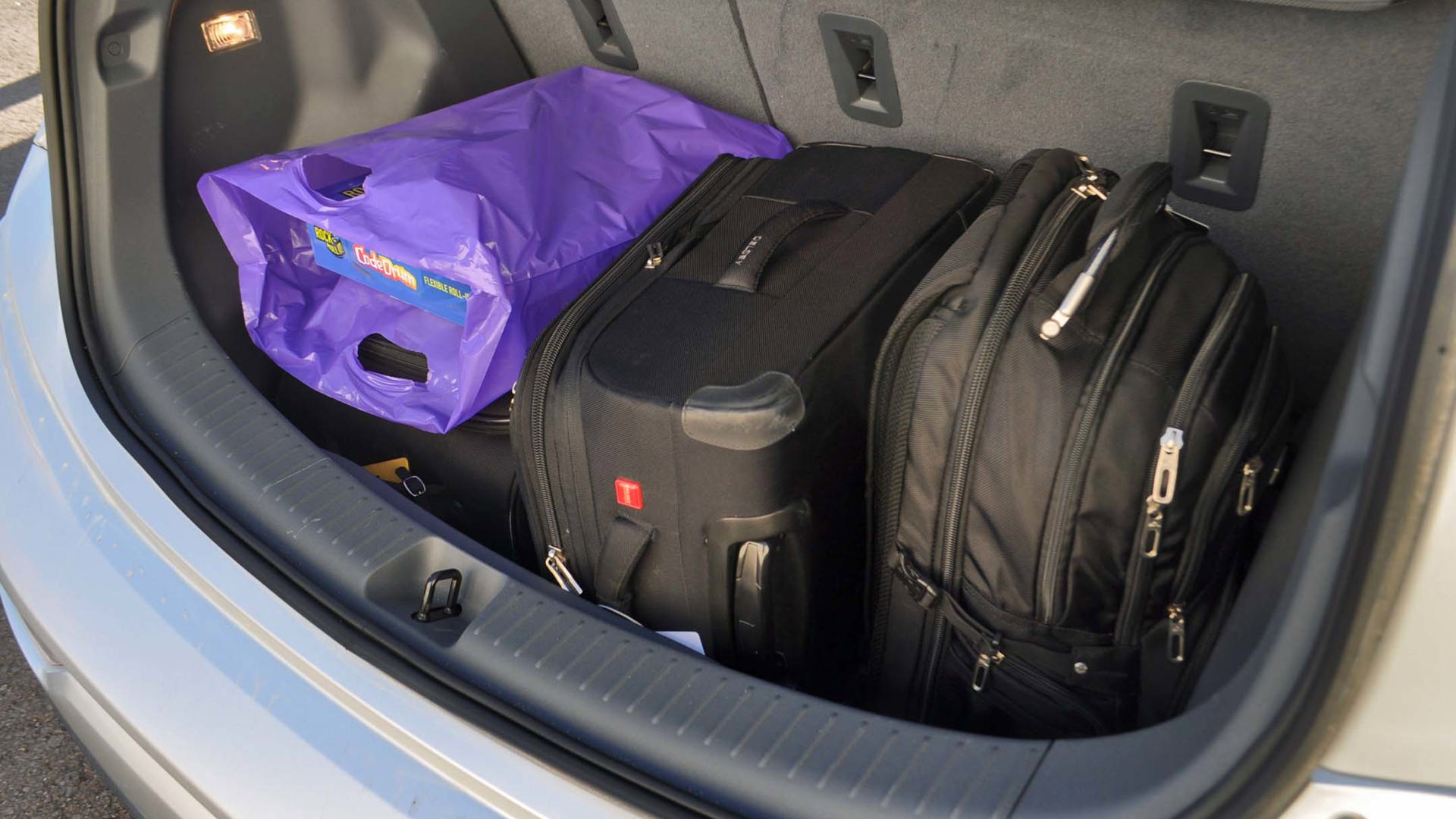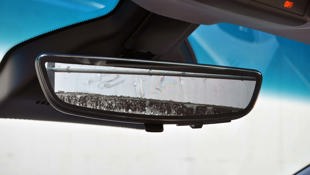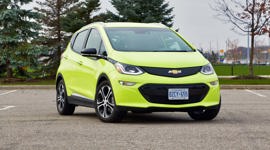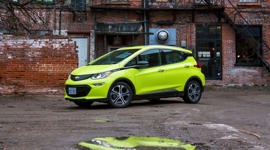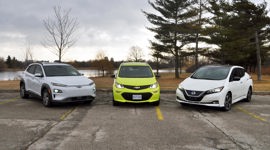 AutoTrader SCORE
AutoTrader SCORE
-
STYLING8/10
-
Safety7/10
-
PRACTICALITY8/10
-
USER-FRIENDLINESS8/10
-
FEATURES7/10
-
POWER8/10
-
COMFORT6/10
-
DRIVING FEEL8/10
-
FUEL ECONOMY9/10
-
VALUE7/10
Portland, OR – The all-electric Chevrolet Bolt brought long-range EVs into mainstream price brackets when it broke onto the scene in early 2017 in Canada, with its official range of 383 km for a price under $40,000 after government rebates if you lived in Ontario, BC or Quebec. The landscape for electric vehicles in Canada has changed quite a bit since then, with no more provincial rebates in Ontario, a new $5,000 EV rebate from Ottawa, and the potential for that Canada-wide rebate to change or disappear, depending on federal election results on October 21st.
The slightly revised 2020 Chevrolet Bolt that’s now at Canadian dealers doesn’t change its price, but increases its range to 417 km, slightly leap-frogging newer rivals, and giving it the most range of any EV currently on the market without a Tesla badge. But it sadly didn’t upgrade some areas where the Bolt fell short, as it did in our all-electric hatchback comparison earlier this year – it’s almost like the Bolt improved where it was already strong, then ran out of budget to address the rest.
Styling: 8/10
The Bolt is an attractively styled hatchback, with a tall shape that provides ample headroom front and back, and a relatively compact shape that should fit in well with the tight parking spots and traffic conditions often encountered by EV drivers. In pickup and SUV-friendly North America, it’s definitely on the small side, especially in width, and while that hatchback silhouette is practical and relatively popular in Canada, it’s still somewhat too low and small to be considered a crossover, which is how Chevrolet tried pitching it when it first came out.
Spotters looking for signs of a 2020 model should look for the new textured grille, versus flat black on prior Bolts, or the new colours: a burnt (Cayenne) orange, which we sampled on arrival day, and a super bright (Oasis) blue. Both outside and in, that’s it for design changes.
Fuel Economy/Range: 9.5/10
On our west coast but chilly fall drive from Tacoma to Portland, Oregon, we were impressed with the maximum possible range that appeared in our fully charged Bolt: a whopping 538 km (or 456 km in the prominent ‘realistic range’ setting). This was especially impressive given that morning temperatures when we set off hovered just above freezing, and that only the minimum range display of 373 km was less than the Bolt’s newly official 417 km official rating on a full charge. Granted, that displayed range came down quickly when we started driving and using the heater (especially) and defrost, which we needed often when we tried to turn off the climate controls entirely as the day gradually warmed up, and the heated steering wheel and front seats worked to keep us warm for much of the drive.
Despite that official range, we couldn’t comfortably make our goal of completing the entire 325 km or so trip on one charge with the heat settings we had. Plus there were a couple acceleration runs to actually test the Bolt’s impressive low-end power, as we had agreed to keep to normal driving versus hypermiling it to squeeze out max range. But a 15-minute quick charge at an Electrify America stop had us on our way soon after a bathroom break, with plenty of electrons now to spare. Look for similarly quick and powerful chargers (each station offering 150 kW to 350 kW charging speeds) coming to a Canadian Tire outlet near you on the Electrify Canada network by year’s end, as recently announced.
User Friendliness: 8/10
It should be noted though, that one of those four quick chargers wasn’t working, and with our group of Bolts arriving one after another, an unfortunate Volkswagen e-Golf owner who had bought his car that day had to wait roughly 10 minutes for a few in our group to finish their charge. This highlights one advantage Tesla has with its Supercharger network, which has fewer locations (as it can only power Tesla vehicles) but generally has many more charging points at each location as well as generally quicker charging capabilities than almost all currently installed CHAdeMO or CCS quickchargers, in its cars and the Superchargers themselves.
The Bolt uses the industry-wide SAE CCS standard, which on the plus side can be found at many more locations than Tesla Superchargers in Canada right now. On the downside, the Bolt still has a max charging rate of roughly 160 km in 30 minutes of DC fast charging, which GM has said can be up to 80 kW. We observed a max quick charging rate of 54 kW, though it can apparently hold its speed in colder temperatures and longer into the charge cycle this year (e.g., ramping down closer to 70 percent of a full battery, versus slowing down at between 50 and 60 percent). Faster charging means less waiting while quick charging on long drives, as we were doing.
It’s an improvement, but still fairly slow in the world of modern quick charging, especially for the Bolt’s expanded 66 kWh battery capacity. That’s up from 60 kWh previously, with the batteries still coming from LG in Korea, as do many of the powertrain parts for the Bolt, which is built at the Orion plant in Michigan that as of this writing is still currently on strike. So far GM Canada says it has not affected Bolt supply, which was increased in 2018 to meet strong demand north of the border, and the 2020 Bolt seems to have arrived in Canada in numbers before the US.
Practicality: 8/10
But with all this quick charge talk, it’s important to keep in mind that the vast majority of EV charging is done overnight at home, where basically every BEV can reap a full charge on a relatively inexpensive 240-volt charging station. GM says it can arrange to have this cost (roughly $1,000-$2,000, installed, before any incentives) rolled into the monthly payments for Bolt buyers, but you may want to check with your local dealer first, as some are more EV-friendly than others. And like most EVs, you can park the Bolt in your unheated garage and ensure it’s warm and toasty every morning when you hop in, and leave on a full charge, using a special Chevy app or the in-vehicle climate timer.
This arguably is one of the major conveniences of EV ownership. The myChevrolet app can also be used to remote start the climate control system from your phone even if not plugged in and charging, though it’ll cost you to access this service after five years, said a GM Canada rep, using an OnStar package that currently costs $15/month.
From a vehicle packaging standpoint, some may be disappointed that the Bolt doesn’t offer a frunk (front trunk), given that the rival Nissan Leaf and revised 2020 Kia Soul EV (with no frunks either) all offer significantly more cargo space than the Bolt’s unchanged but still worthy 479 L.
Features: 7/10
The base Bolt LT is somewhat better equipped in Canada than in the US, with DC quick charging and the cold weather heated seats and steering wheel all standard here. That said, we sampled an LT briefly at an autocross course set up at Portland International Raceway, and even keeping the added content levels in Canada in mind, the base model interior feels more like a C$30k car than a $45k one. Yes, the super large 10.2-inch screen and standard seven-speaker Bose sound system with subwoofer, wireless charging and standard twin USB charging ports in the rear all speak to the high-tech nature of this car – and likely its buyers. That goes for its available Wi-Fi too, as well as the ability to view your Bolt’s charge level and ensure it’s locked from anywhere using your smartphone.
But the lack of a native GPS system means you always have to connect your phone for it to use AndroidAuto or Apple CarPlay, though the system can at least now read the Bolt’s charge level and communicate with the maps, allowing it to direct you to the nearest charge station if it calculates that your destination is beyond your current range, for example. The lack of power seats though, the narrowness of these seats, the lack of power for the rear tailgate, and the overall plastic-heavy interior ambiance just don’t seem to jibe well with the entry-luxe price tag – even after government rebates.
Safety: 7/10
There are a healthy list of safety features standard on Chevrolet’s Bolt, but unfortunately for Bolt fans and drivers, not only have other EVs started offering more safety features, but less expensive vehicles like the Civic and the Corolla have as well. The Bolt does offer 10 airbags standard, including driver and passenger knee bags, while top Premier models also include a blind spot warning system, rear cross traffic alert, and a very useful 360-degree overhead view parking mode, now with a clearer HD picture, as well as an interior mirror that can see straight out the rear from a camera mounted in the rear tailgate. This became especially helpful to avoid blind spots from the two rear headrests, though my driving partner preferred the traditional mirror view, which also isn’t susceptible to road-going muck on the camera lens.
There is an optional safety package on all trims that includes automatic emergency warning and braking, lane keep assistance with departure warning, and a front pedestrian emergency braking system. But what it doesn’t include, surprisingly, is a radar-based cruise control function that can automatically slow the Bolt to a stop and then get it going again, which is becoming common even on top-trim mainstream compact sedans and hatchbacks.
Comfort: 6.5/10
This is sadly where the narrow interior hurts the Bolt the most. From the aforementioned front seats that don’t seem particularly designed for North American rear ends, to the common brushing of elbows with your passenger, it almost seems like the Bolt was designed first for overseas markets, even though it was released in the US first – a market known for its fair share of larger and wider drivers. The suspension settings themselves are fairly well-controlled, with bumps not upsetting the Bolt as it may in other similarly sized cars. Rear passengers are treated well, with rear seat heaters and cupholders in the door and folding armrest, as well as the two USB charge ports that will please kids and car sharing passengers alike.
Power: 8.5/10
Now this is where the Bolt shines. With a zero to 100 km/h time of 6.5 seconds, the front-wheel drive Bolt is literally a VW GTI-hunting hot hatch in a straight line – and especially just off the line. Its 266 lb-ft of torque translates to a satisfying push in the back whenever you want it, and it’s easy to chirp the front tires if you’re heavy with the right foot. On the highway, its 200 hp and single speed transmission are super smooth, but its reserves of passing power are a little less impressive than its in-town point-and-squirt energy, though there’s plenty of urge under 120 km/h.
Driving Feel: 8/10
Though the Bolt doesn’t have the handling sophistication of the GTI in the corners, as its torsion-beam rear suspension and low rolling resistance tires suggested before that quick spin on the auto slalom confirmed it, the Bolt is still a fun car to throw around in hot hatch fashion. But EV enthusiasts may be most enamoured of its ability to provide one-pedal driving by moving its electronic shifter down to L, which at first feels like driving in second gear all the time, but much more comfortably given the electric motor’s smooth and near-silent operation. Instead of braking when encountering a red light, one can simply lift off the throttle slowly, and a higher level of energy regeneration will slow the Bolt right down to a stop. It feels strange at first to keep your foot pressed on the accelerator even at a lower level when approaching traffic, so I preferred to use the Bolt’s unique regeneration paddle to the left of the steering wheel, which slows the car quickly, and often feels like a super smooth downshift or two. But it can be tough to get just the right amount of retardation with the paddle, which feels more like an on-off switch, and doesn’t vary the level of retardation/regeneration very progressively.
Value: 6.5/10
In BC and Quebec, with their respective $3,000 and $8,000 provincial rebates stacked with the current $5,000 national EV rebate, it’s easy to see a compelling value story with the Bolt. It’s not surprising to see why EV sales are so strong in those provinces, likely helped along by their relatively high fuel prices, especially in Vancouver and Montreal, respectively. It’s a little more difficult elsewhere, especially in Ontario, with recent memories of the $14,000 EV rebate before it was cancelled by the Ford government in summer 2018 making it arguably more difficult psychologically to see value in this province, especially with the new trio of Korean Bolt rivals (Kona EV, Kia Soul and Niro EVs).
But keep in mind, Bolt owners will pay much less for fuel than any gas-only fuelled vehicles, even similarly sized new ones with excellent fuel consumption numbers. Looking at fuelling costs using newly updated 2020 government figures, Natural Resources Canada estimates the annual price for electric ‘fuel’ to drive the 2020 Bolt for 20,000 kilometres to be $463/year, compared to a Toyota Prius’ estimate at $1,170, and a 2020 Honda Civic Hatchback’s estimate of $1,794/year. And those are both amongst the most efficient gas-powered vehicles in their respective classes.
So if you’re trading in something older and less efficient than those two – which is highly likely – your potential fuel savings (and arguably the Bolt’s resulting value) will be notably higher.
The Verdict
The fact that the 2020 Chevrolet Bolt is now rated at two kilometres more total range than the Hyundai Kona EV may be somewhat of a marketing coup by putting it at the top of its class in that key regard, but it doesn’t mean much if any true range advantage in the real world. And the lack of progress on the interior of the 2020 Chevrolet Bolt suggests that, as many noted on the event, GM seems to be focusing its EV development dollars on its next-generation EVs, such as a larger SUV version of the Bolt that is unofficially said to be in the works for (roughly) late 2020. That SUV was whispered to likely usher in further interior and packaging refinements to the Bolt hatchback that would (finally) address some of the issues raised since the Bolt’s debut, and made more glaring by the increasing number of impressive newer rivals.
| Engine Displacement | 150 kW electric motor |
|---|---|
| Engine Cylinders | NA; Battery size: 66 kWh |
| Peak Horsepower | 200 hp |
| Peak Torque | 266 lb-ft |
| Fuel Economy | (Range: 417 km) 1.9/2.2/2.0 Le/100 km city/hwy/combined |
| Cargo Space | 479 L/1,603 seats down |
| Model Tested | 2020 Chevrolet Bolt Premier |
| Base Price | $49,800 |
| A/C Tax | $100 |
| Destination Fee | $1,795 |
| Price as Tested | $48,065 (including current $5,000 federal rebate) |
|
Optional Equipment
$790 Driver Confidence Package (Low Speed Forward Automatic Braking, Lane Keep Assist with Lane Departure Warning, Forward Collision Alert, Following Distance Indicator, Front Pedestrian Braking, IntelliBeam auto high-beams)
|
|




